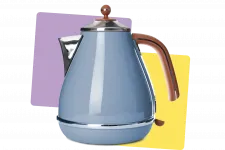To specify exactly what is included in the sale of property in a short blog is impossible. However, for the purposes of this item, we’ll exclude mineral rights and the legal definition of Freehold and Leasehold interests and look at something more basic!
There is no specific definition of what is included and what is not. Neither is there a definite list of items that are fixtures or fittings. However, it is generally accepted that fixtures (attached substantially to the building like light fittings and fitted wardrobes) are usually defined as fixtures and would normally be sold with the house. Fittings are less permanent (such as carpets and curtains or lampshades) and are usually not included in the sale.
Where disagreements break out over this matter it’s usually because of assumptions and a lack of communication. Therefore, it’s worth both parties making some simple precautions. They are;
The Seller should:
- Make sure that you advise your agent of any fixtures or fittings that are excluded from the sale and check the sales particulars to make sure they are accurate. If you are taking a geranium from the garden, state it clearly in the details of sale!
- When prospective buyers are viewing make it clear if something is not part of the sale. Obviously, if something is, make that clear also.
- When you agree the sale, your conveyancer may ask for a list of fixtures and fittings that are excluded from the sale. Make sure this inventory reflects the sales particulars or any subsequent agreement you have made with the purchasers.
The Buyer should:
- Read the sales particulars and if you aren’t sure about anything, ask the seller.
- Make sure that anything you specifically agreed as being included is detailed in the contract for sale and the attached inventory.
- Check the property as soon as you get the keys. If something is missing tell your conveyancer immediately. That said, it is difficult to enforce these things once the sale is complete.
It is quite possible a seller will leave things you didn’t expect. If that is a garden shed, you may be happy. If the shed is full of old tires, you may not. Never assume. Always clarify.
Recent posts

Here are the lowest fixed mortgage rates of the week, available to first-time buyers, home movers, buy-to-let, and those remortgaging.
Call us for more information: 01628 507477 or email: team@mortgagerequired.com.
Autumn Budget 2025: A Summary
7 days ago

Chancellor, Rachel Reeves, has delivered the Autumn 2025 budget. We have summarised the government's plans for tax and spending.
Renters' Rights Act
19 days ago

The Renter’s Rights Bill became law at the end of October, which means it has been signed off by the King, and it is now the Renters’ Rights Act. Despite this becoming law, these changes are likely to start changing within the next six months, with the aim of being fully implemented throughout 2026 and into 2027.
Mortgages and budgeting to be taught in schools
26 days ago

A welcome change in school is coming as financial literacy is due to become compulsory in schools in England.
The Government has announced that as part of the new national curriculum, children in primary and secondary education will be required to learn about budgeting, compound interest, managing money, and mortgages.
The top 10 most beautiful villages in the world
24 Oct 2025

Forbes has published a global ranking of stunning locations and one popular picturesque corner of the UK has nabbed top spot.

Over three years after the Mini-Budget took place, we look at what the mortgage market looks like now, showing the difference in mortgage repayments.

The government has announced plans to make buying or selling a home cheaper and quicker with what is being called the “biggest shake-up to the homebuying system in this country’s history.”
More borrowers using equity release
1 Oct 2025

Almost one in five equity release mortgages are now taken out to provide financial support to family.



















